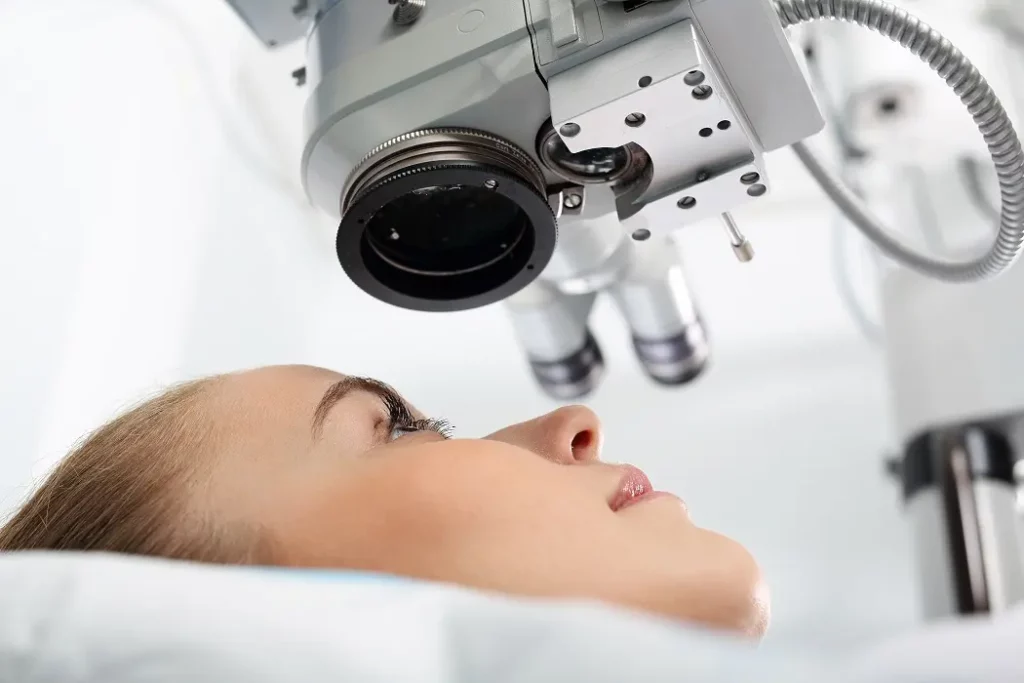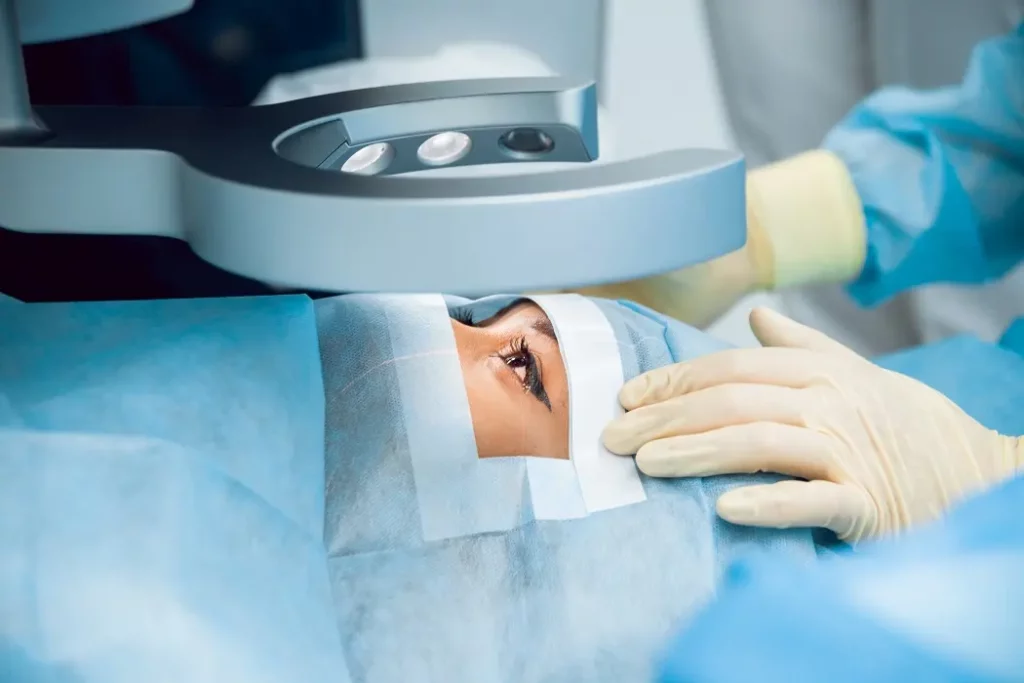

Imagine waking up and seeing clearly without glasses or contact lenses. Imagine running or swimming without worrying about your glasses falling off or contacts drying out. Imagine enjoying life without constant vision correction.
It’s entirely possible with innovative LASIK solutions in Kansas City, MO. You can achieve clear vision without the need for glasses or contact lenses.
In this post, we discuss the latest technology in eye correction and how it can improve visual acuity.
Vision correction technology is a broad term encompassing a variety of methods used to correct vision, which include:
Vision correction technology is life-changing for those with vision problems, as it allows them to enjoy activities such as driving, reading, and sports, allowing them to participate fully in life.

Thanks to medical and scientific advancements, the latest eye surgery technology has improved drastically since the first recorded use of glasses in 1286.
Critical milestones in eyesight correct technology include:
The latest technology for eyesight correction will no doubt continue to improve as technology advances.

Laser vision correction is a safe and effective procedure to help patients achieve 20/40 (Legal Driving without glasses) or better vision. Performed by an experienced eye surgeon, the laser reshapes the cornea, and the clear front part of the eye, to correct nearsightedness (myopia), farsightedness (hyperopia), and presbyopia (vision loss due to age).
In 2003, the femtosecond laser was introduced as a more precise alternative to the surgical blade used to create the corneal flap in LASIK surgery, allowing patients with thinner corneas to be eligible for LASIK. The laser creates microscopically thin flaps, which reduce dry eye. It is also used in small incision lenticule extraction (SMILE) vision correction procedures – a common laser treatment for nearsighted patients.
A type of excimer laser vision correction that uses wavefront technology to create a custom treatment plan for each patient. The technology maps the eye’s surface to identify minute, higher-order aberrations that cause blurry vision even after traditional LASIK. This data guides the laser throughout the corrective procedure, resulting in a more precise and individualized treatment.
PRK, or photorefractive keratectomy, is an excimer laser vision correction procedure similar to LASIK, which uses a laser to reshape the cornea. However, PRK does not require the creation of a corneal flap. Instead, the laser is applied directly to the cornea to remove the top layer. This refractive surgery results in equivalent vision to LASIK and SMILE, but it may take longer to achieve full vision correction.

Patients who don’t qualify for laser vision correction surgery can still achieve better vision without laser technology. Our doctors offer the latest implantable and intraocular lenses (IOLs), alternatives to refractive eye surgery that can address various vision problems, including cataracts and age-related vision deterioration.
Posterior chamber intraocular lenses (PCIOLs), or multifocal intraocular lenses, are a standard cataract treatment. They are implanted in the eye after removing the natural lens, allowing patients to see objects up close and at a distance without the assistance of glasses or contact lenses.
Light Adjustable Intraocular Lenses are intraocular lenses (IOL) customized after surgery to improve vision. LALs are made of a unique material that reacts to light, allowing the surgeon to shine a specific wavelength of light on the lens, which changes its shape.
One of the main advantages of LALs is that they provide more flexibility. With LALs, the surgeon can fine-tune the patient’s vision after surgery, which can help to ensure that patients achieve the best possible vision.
Toric intraocular lenses (IOLs) correct astigmatism – a common vision problem that causes blurred vision, especially at near and intermediate distances. Toric IOLs bend light in a specific way to fix the cornea’s irregular curvature, the eye’s clear front part. Typically made of acrylic, toric IOLs are available in various powers and toric strengths to meet each patient’s needs.

In 2022, the FDA approved the EVO Visian ICL (Implantable Collamer Lens) for treating nearsightedness in patients with moderate to severe myopia with or without astigmatism.
Unlike LASIK surgery, which reshapes the cornea, inserting the permanent implantable contact lens does not change the shape of the cornea. This means there is a lower risk of side effects such as dry eye.
Currently, the newest eye surgery technology uses Wavefront technology.
However, there are also other exciting developments on the horizon:
Vision correction technology has come a long way in recent years, and there are now a variety of safe and effective options available to people who want to improve their vision. From glasses and contact lenses to laser eye surgery and implantable lenses, there is a solution for everyone.
If you are considering vision correction surgery, it is essential to talk to your doctor to discuss the latest advances in LASIK eye surgery and which option is best for you. Why not come in for an eye evaluation to see if you are among those who can take advantage of the newest eye correction surgery?
Schedule a FREE laser vision correction evaluation with our team today.